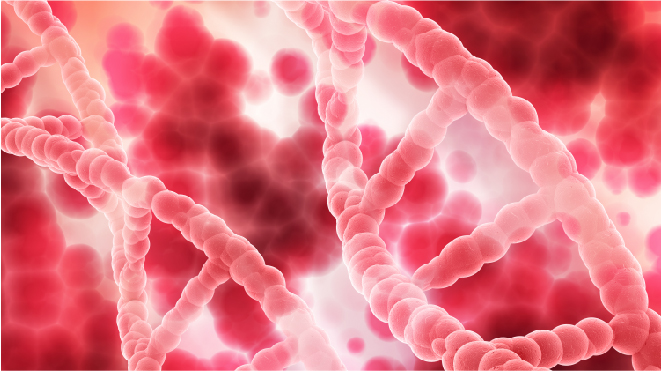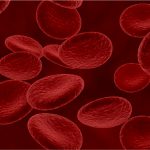Blood cancer can occur when there is an abnormality in the count of the blood cells or malfunctioning of blood cells. Most of the blood cancers start at the bone marrow where the blood cells start to form. Depending on the type of blood cells, age of the patient, tolerance of the patient to the treatment, and overall health, there are different types of treatments for blood cancer. These include chemotherapy, radiotherapy, stem-cell transplantations, as well as other blood targeted therapies.

Generally, blood targeted therapies go first if these treatments do not improve the condition of the patient and do not help in eliminating the cancer cells, other treatments.
The survival rates of the treatment generally depend on the type, stage, and characteristics of cancer, the medical history of the patient, the treatment chosen, and response to treatment. The following are the treatments used in diagnosing blood cancers, along with their results/survival rates:
Blood targeted therapies:
These therapies target the molecules that benefit cancer growth and the division of cancer cells. Particularly genes, proteins, and supporting blood vessels of the blood cells are under examination in these therapies.
In some cases, the blood targeted therapies alone do not give effective results. In such situations, these therapies go with other treatments to eliminate the cancer blood cells in the body.
Depending on the type of blood cancer and the characteristics of the cancer cells, the treatment categories are the following:
1. Proteasome inhibitors:
Proteasome inhibitors are a part of the treatment. These inhibitors restrict the breaking down of those proteins which enable cell division control. A breakdown of these proteins can lead to a drastic increase in cell division, which forms a type of cancer.
Result:
These drugs are proteins that block the action of proteasomes. They are mainly used to treat multiple myeloma, a type of blood cancer
Proteasome inhibitors show remarkable progress in decreasing blood cancer.
They are one of the most reliable drugs used and going to be a part of the present and future in the treatment of blood cancer.
2. Tyrosine Kinase Inhibitors (TKIs):
The gene BCR-ABL if formed by an abnormal chromosome which helps information of a protein that generates cancer cells. The TKI inhibitors target these genes. The inhibitors are generally drugs that eliminate the blood cells with the BCR-ABL Gene and inhibit healthy protein in the blood cells.
Result:
These drugs target enzymes that are responsible for the activation of many proteins by signal transduction cascades. They are very effective in treating chronic myeloid leukemia (chronic blood cancer).
Most of the patients experience a molecular remission with the inhibitors employed. However, the intensity of remission depends on the time at which the TKI administration starts.
3. Monoclonal Antibodies:
This treatment results in making the body immune to fight the cancer cells. Monoclonals are human-made versions of immune system proteins. These are designed to attach to the surface of the cancer cells. Monoclonal antibodies go along chemotherapy for chronic blood cancer. Oncologists prescribe these based on which protein the drugs target.
Result:
These antibodies react to the cancer cells resulting in helping the immune system destroy them.
These often go with other treatments.
These drugs can cause side effects on the patient’s body, especially on the chest, heart, and lungs.
4. FLT3 Inhibitors:
These inhibitors are drugs that target the mutations in the FLT3 chromosomes. These drugs often go with chemotherapy.
Result:
The outcome of this treatment is to eliminate abnormal chromosomes. They treat acute myeloid leukemia (AML).
According to a survey, FLT3 drugs when combined with chemotherapeutic drugs showed a complete remission rate of 68% in patients with 76FLT3-ITD-positive AML.
It depicts a higher survival rate.
The blood targeted therapies are not entirely reliable in eliminating cancer. These drugs often go with chemotherapy and stem cell transplantations.
The side effects are very generalized. They include:
- Nausea
- Fatigue
- Skin rashes
- Allergic reactions
- Vomiting
- Blood clotting
- Hair loss
- Gastrointestinal perforation
- Variations in blood pressure and heart rhythm
Chemotherapy
This treatment is one of the most reliable treatments to cure blood cancer. Chemotherapy results in killing the cancer blood cells in the body. In this treatment, the drugs injected into the veins or the larger muscle. Depending on the stage of the treatment, they are orally taken and or given under the skin.
These drugs travel along the bloodstream to reach the cancer cells. The drugs, then restrict the cells to spread cancer in the body further. This treatment becomes one of the most effective ones because these drugs attack the cancer cells that are dividing quickly.
Many chemotherapeutic agents cannot reach the brain and spinal cord. In these cases, intrathecal chemotherapy is preferable, where the drugs are injected in the cerebrospinal fluid.
Chemo goes in stages. After every stage of treatment, the patient gets a period of rest under medication. One can expect a 90% elimination of cancer cells through this treatment. The progress in treatment is monitored continuously, and eventually, then the treatment proceeds.
Result:
Chemotherapy is one of the most effective treatments to cure blood cancer.
For patients younger than 60 years, the remission rate is 70-80%.
The five-year survival rate for chronic blood cancer patients is 26%, and that for acute blood cancer patients is 65%.
Guidelines:
The oncologist should take care of the tolerance levels of the person before proceeding with the treatment. The side effects could last for long, but since it provides up to 90% accuracy in killing the blood cells, this treatment is preferred. The side effects include:
- Kidney damage
- Heart complications
- Central Nervous System damage
- Digestive tract disturbances
- Hair loss
- Variation in blood cell count
Radiotherapy:
Radiotherapy aims to kill the cancer blood cells by using radiation with high wavelength. The process if effective and can give almost 100% results in eliminating the cancer blood cells from the body, but is preferred only after trying chemotherapy as it has potentially dangerous side effects. Radiotherapy is used to kill the blood cells in the brain and in the spinal fluid, where most of the other treatments fail. It also reduces the pain caused by blood cancer.
Results:
The main objective of this treatment is to kill blood cancer cells. It restricts the growth and division of blood cancer cells, as well.
The survival rate of blood cancer after radiotherapy is considerably high, making it one of the most reliable treatments for treating blood cancers. The 5-year survival rate for radiation therapy is 61.5%. Younger patients show a remarkable response during the therapy. Patients above 60 years hardly respond to the treatment.
Depending on the type of blood cancer treated, tolerance levels of the patient to the treatment, and the amount of radiation used in the treatment, the potential side effects could be:
- Skin problems
- Fatigue
- Abdominal issues
- Chest issues
- Pelvic issues
Stem cell or bone marrow transplantation:
This treatment infuses healthy stem cells in the body. Also, this treatment improves the body mechanism to generate healthy blood cells.
It helps in the suppression of blood cancer and in the simulation of the new bone marrow, in order to reduce the possibility of a relapse.
Stem cells are in the bone marrow, umbilical cord blood, and in circulating blood. Transplantation eliminates the cancer blood cells but has adverse side effects on the patient.
Before a stem cell transplant, the patient is undergoes a conditioning regime. This treatment involves the elimination of cancer cells in the body, for which the patient undergoes high levels of chemotherapy and in very few cases, radiotherapy as well under strict monitoring. It prepares the body for stem cell transplantation.
The stem cells are given in the veins. These cells travel across the blood and reach the bone marrow to make new blood cells in a procedure called engraftment.
The stem cell transplant procedure would generally take an hour.
Results:
The 3-year survival rate in people above 60 years is 25% only while that in people below 60 years is approximately 60%.
65-70% of remission is observed in people less than 60%. Life expectancy in these patients is from 5-15 years.
Guidelines:
Posttransplantation, a strict follow-up care plan, is mandatory to monitor adverse side effects that the patient could experience. The patient’s blood cell count has to be under strict surveillance, as the transplantation can lead to a decrease in the blood cell count. Most patients would require blood cell and platelet transfusion. The patients have also prescribed a course of antibiotics to prevent any infections that could occur in case the infused cells are donated.
This treatment is preferable if chemotherapy or radiotherapy does not give satisfactory results. Though stem cell transplantation is beneficial, it has adverse side effects on different parts of the body due to which it is the last option. They include
- Low blood cell count
- Anemia
- Digestive problems
- Bleeding
- Skin and hair problems
- Kidney damage
- Lung problems
- Heart problems
- Central Nervous System problems
- Eye problems
- Fertility issues
To get the best results of the treatments, the patients have to follow a rigorous follow-up care plan to avoid the recurrence of blood cancer or any secondary cancers. Patients also have to continue medication without fail to avoid the late effects.
Measuring treatment responses:
The treatment responses measure the results or outcomes of any treatment used in curing blood cancer. The following tests do it:
- Complete response
- Partial response
- Stable disease
- Progressive disease
- Clinic relapse
- Relapse from complete response



